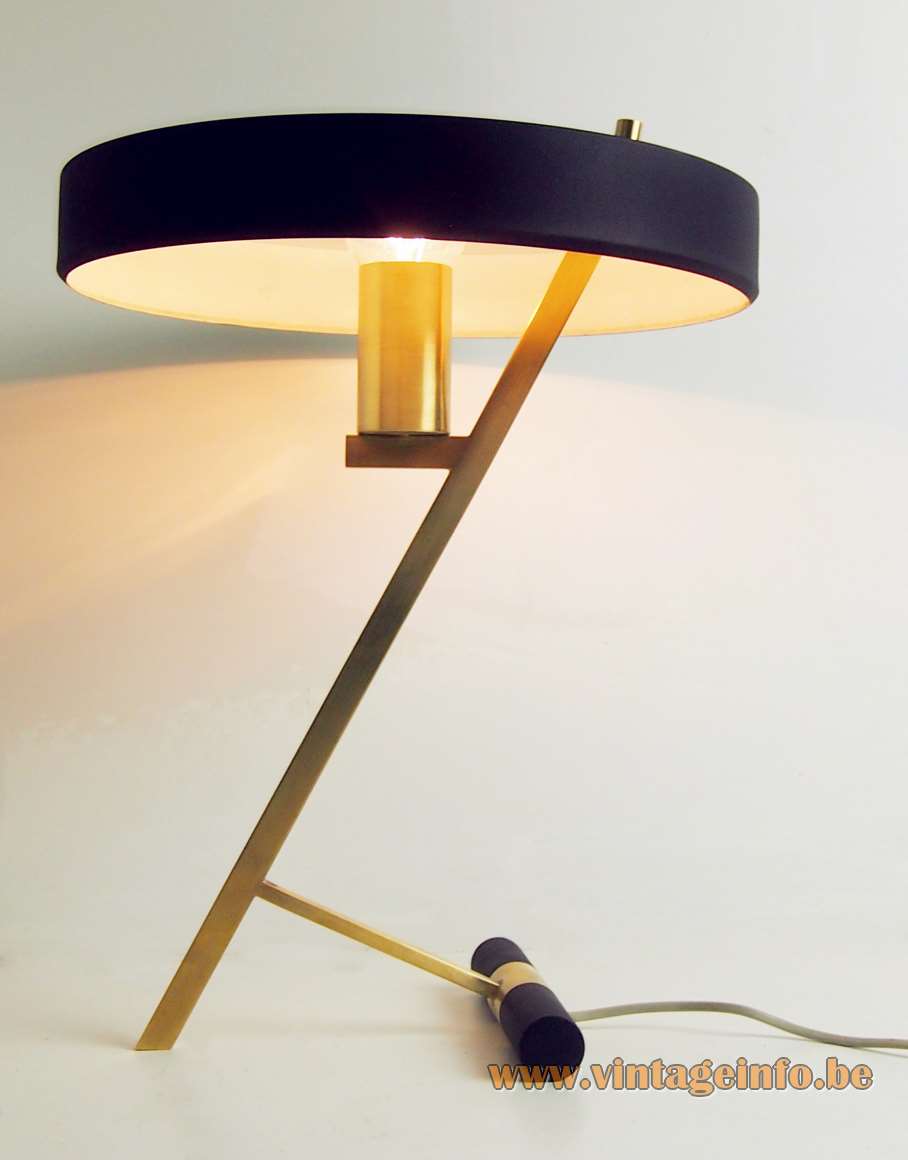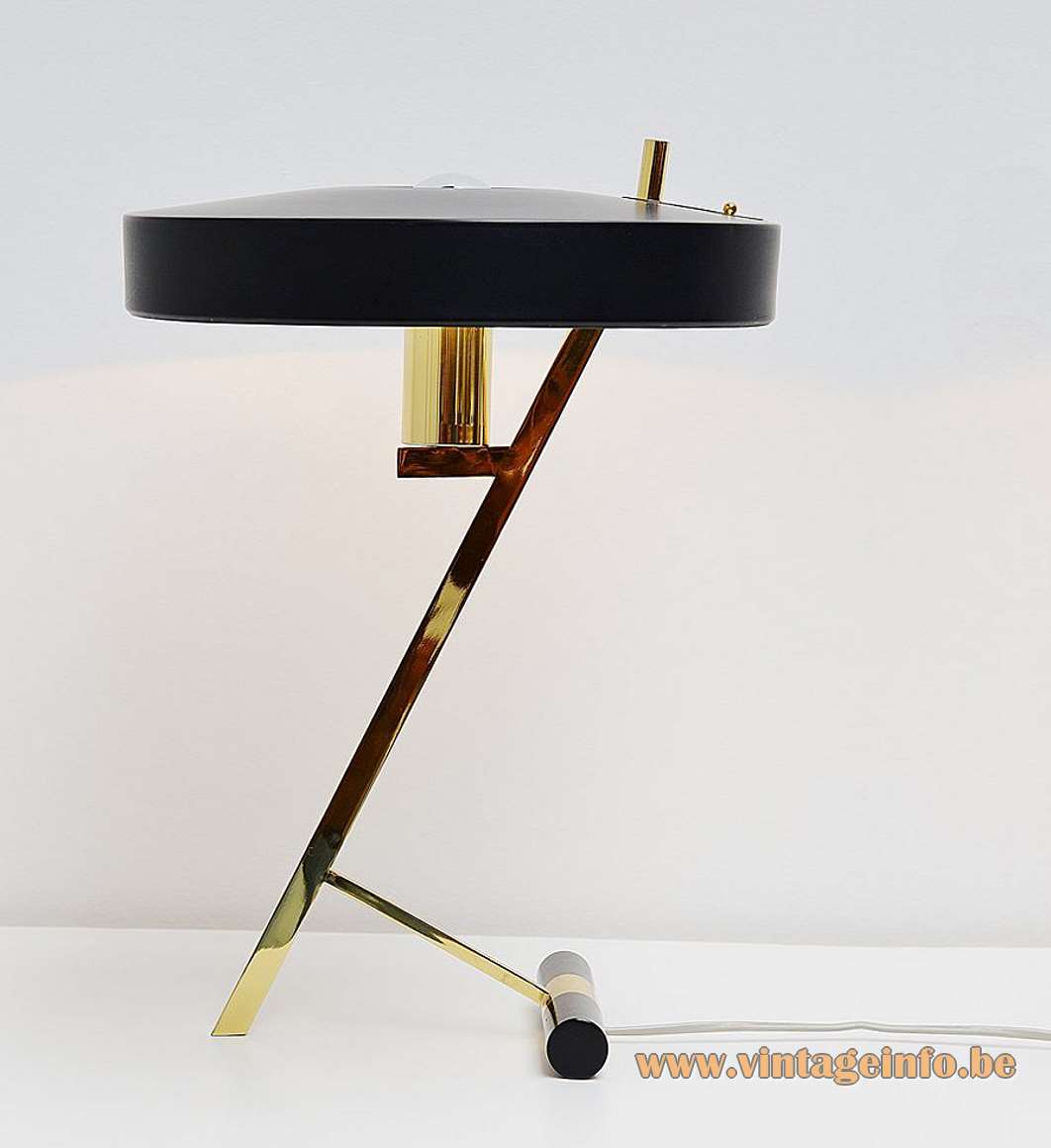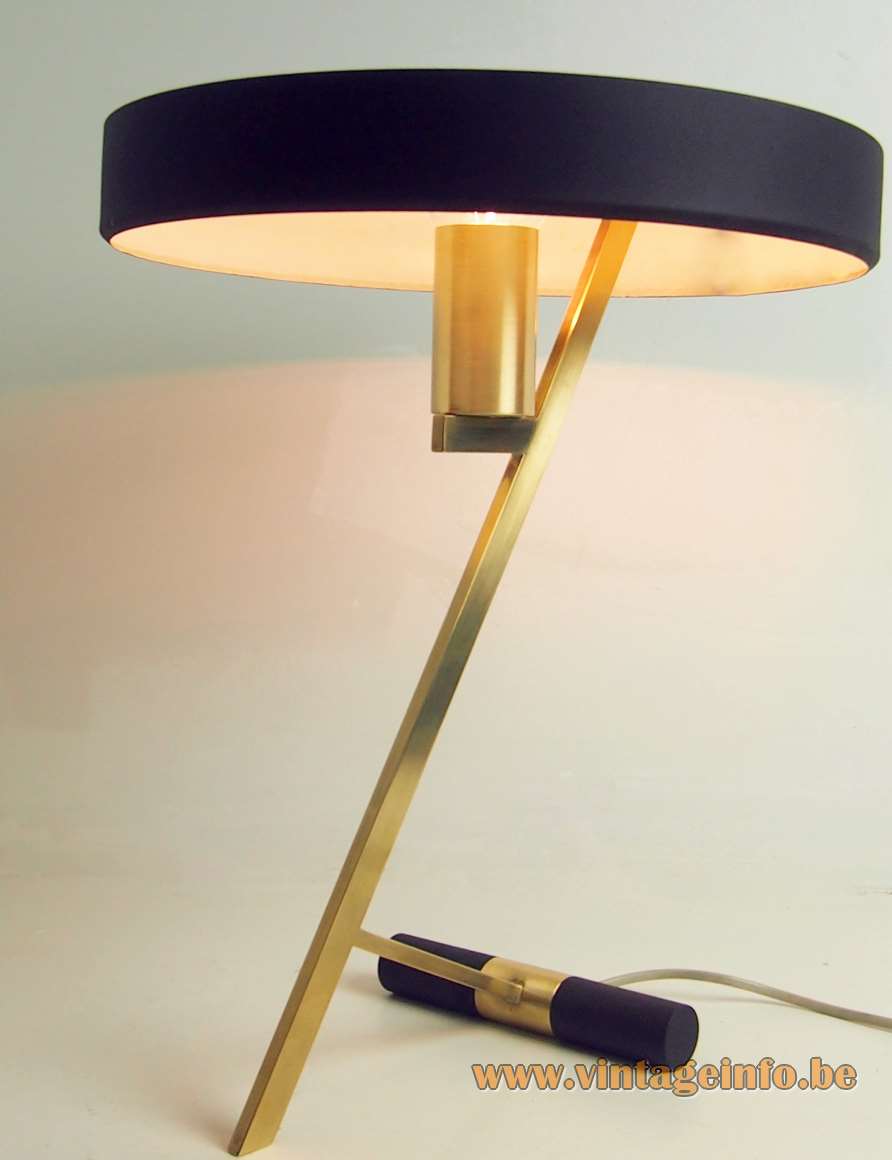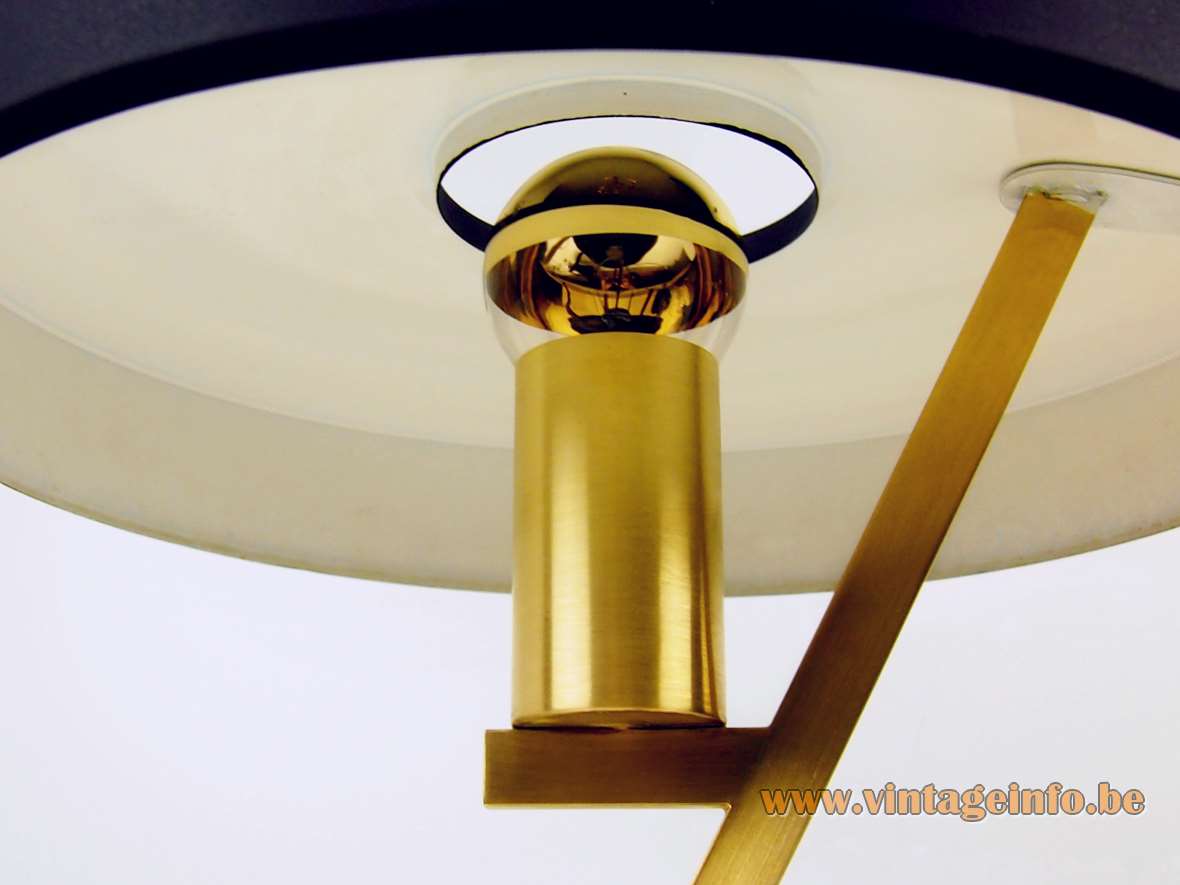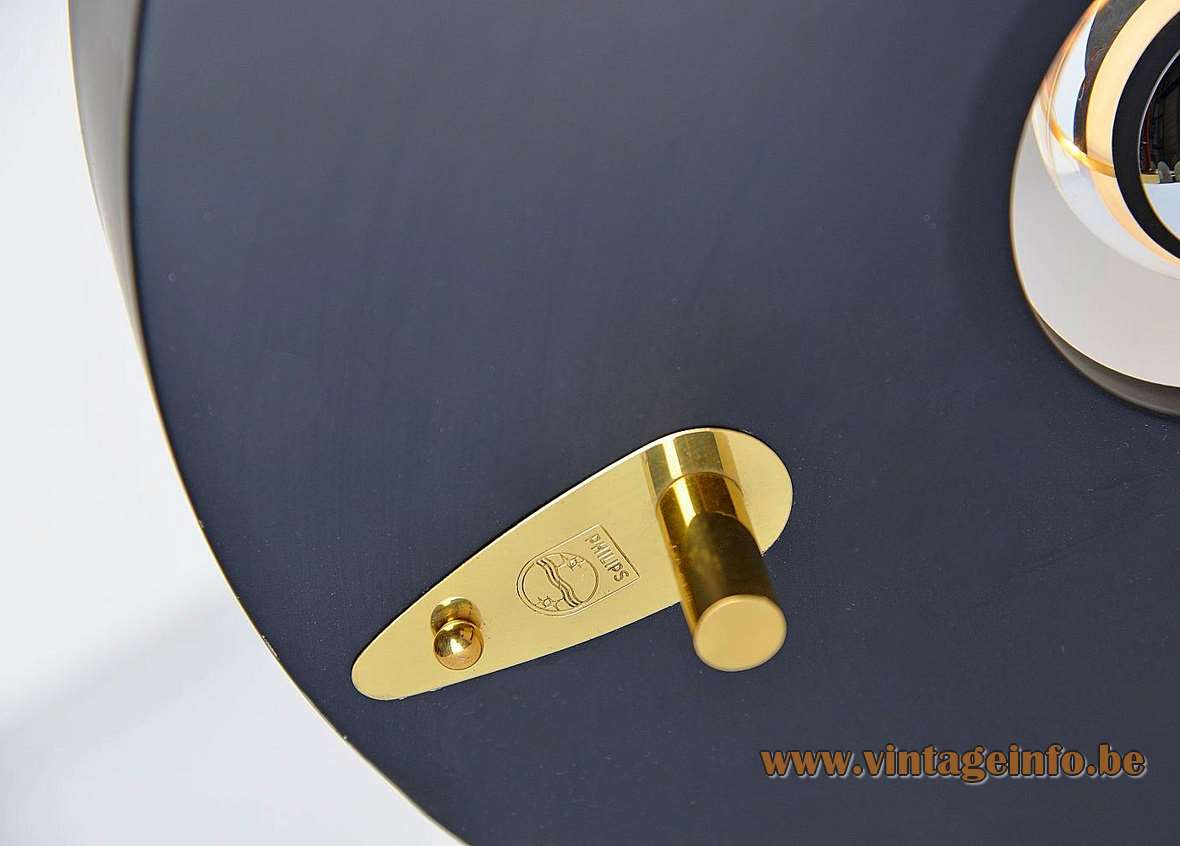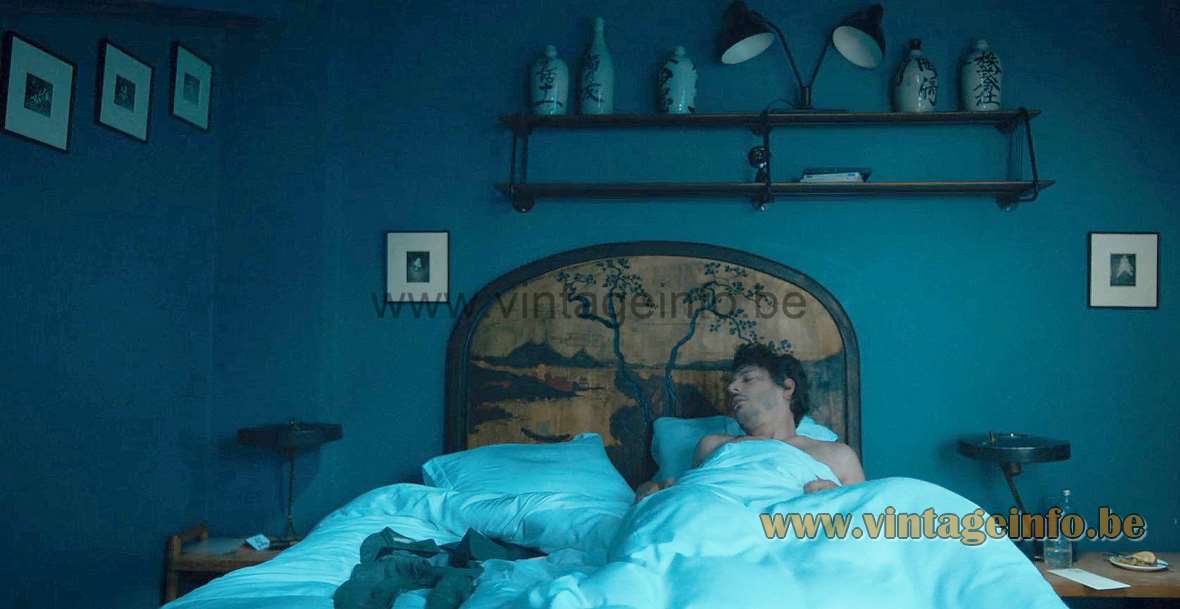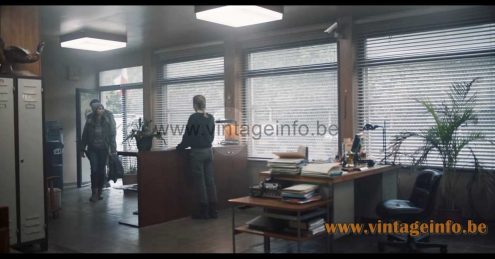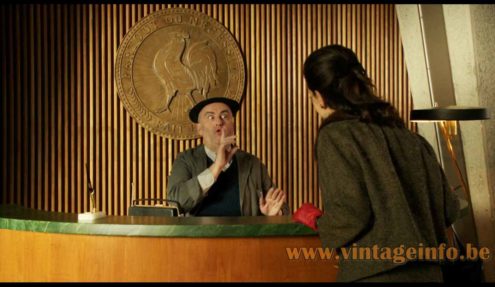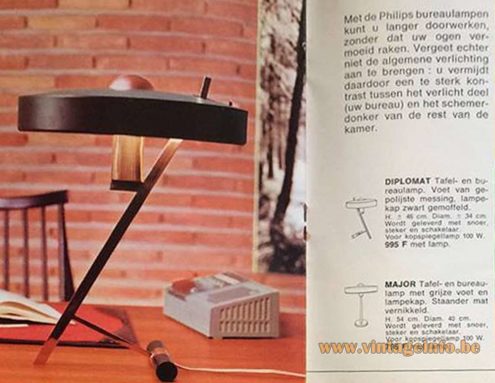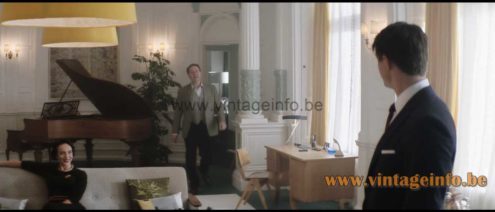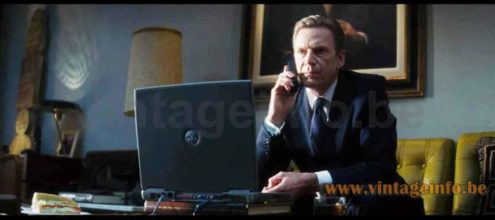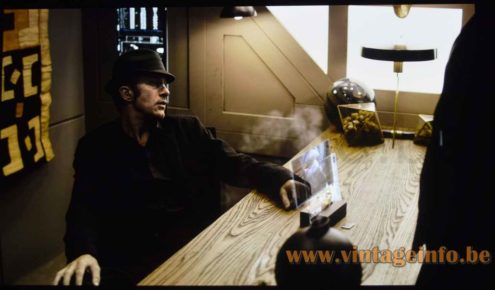Lamps in the movies
Dix Pour Cent
Two Philips Diplomat desk lamps were used as a prop in the French TV series Dix Pour Cent (10%). English title: Call My Agent. Here used as bedside lamps in the bedroom of French singer Julien Doré. Episode 4 of season 2 (2017). Also Isabelle Adjani is a guest star in this episode.
Zone Blanche
A Philips Diplomat desk lamp was used as a prop in the 2016 French-Belgian television thriller series Zone Blanche (White zone but named Black spot). Starring Suliane Brahim, Hubert Delattre and Laurent Capelluto. Many other lamps were used as a prop. You can find several of them over here.
Au Service De La France
A Philips Diplomat desk lamp was used as a prop in the 2015 – 2018 French parody spy TV series Au Service De La France (A Very Secret Service). Starring Hugo Becker, Wilfred Benaïche and Christophe Kourotchkine. Many lamps were used, mostly French lamps. Here in episode 2, season 2. This lamp is a time traveller, the series is situated in 1960. Several other errors appear in this series.
Links (external links open in a new window)
The complete history of the company on the Philips website
The Evoluon building – Wikipedia
Website of the Philips Museum in Eindhoven
Louis Kalff – Wikipedia (only in Dutch)
Call My Agent! – Dix Pour Cent – Wikipedia
Call My Agent! – Dix Pour Cent – IMDb
Zone Blanche – Black Spot (TV series) – Wikipedia
Zone Blanche – Black Spot (TV series) – IMDb
Crooked House (2017) film – Wikipedia
Crooked House (2017) film – IMDb
The Interpreter (2005) film – Wikipedia
The Interpreter (2005) film – IMDb
Au Service De La France (2015 – 2018) TV series – Wikipedia
Au Service De La France (2015- 2018) TV series – IMDb
The Expanse (2015 – 2021) TV series – Wikipedia
The Expanse (2015 – 2021) TV series – IMDb
Ericson Ericofon telephone – Wikipedia
Vintageinfo
Chocolate brown Diplomat desk lamp
Decora desk lamp – 1st version
Other lamps in the Zone Blanche TV series
Other lamps in the Dix Pour Cent TV series
Philips Diplomat Desk Lamp
Materials: Brass rods and slats base. Black painted brass counterweight. Brass tube. Matt black painted aluminium mushroom lampshade, painted white inside. Bakelite E27 socket.
Height: 45 cm / 15.74”
Width: ∅ 34 cm / 13.77”
Electricity: 1 bulb E27, 1 x 100 watt maximum, 110/220 volt.
Any type of light bulb can be used. But a big silver tipped light bulb is preferred. There is a difference in sizes between 60 and 100 watt incandescent light bulbs. The 100 watt bulb is preferred.
Period: 1960s, 1970s – Mid-Century Modern.
Designer: After a design by Louis Christiaan Kalff.
Manufacturer: Philips, Eindhoven, The Netherlands.
Other versions: The Philips Diplomat desk lamp exists in several colours. Also a version with a leather rim exists.
Often named Z-lamp, the reason is clear. The real name is Diplomat. It is the successor of the Decora desk lamp designed by Louis Kalff in the 1950s. This desk lamp was made from the late 60s, early 70s until the 1980s. Same desk lamp, different lampshade. You can find the Decora over here on Vintageinfo.
This “modern” angular lampshade was the redesign for several lamps designed by Louis Kalff in the 1950s. The lampshade was not designed by Louis Kalff, since he retired in 1960. Probably designed under his approval by the Philips design team.
Koninklijke Philips N.V.
Inspired by the fast-growing electricity industry and the promising results of Gerard Philips own experiments to make reliable carbon filaments, Frederik Philips (his father) financed the purchase of a modest factory in Eindhoven, The Netherlands in 1891. Frederik Philips was a Jewish banker based in Zaltbommel.
In 1895, after difficult first four years and near bankruptcy, Anton Philips joined the company. He was Gerard’s younger brother. With Anton’s arrival, the family business began to expand rapidly. The brothers changed their family business by founding the Philips corporation. They laid the foundations for the later electronics multinational.
In 1930 the first shaver of the Philips company was introduced and was simply called “The Philishave”.
A day before the German invasion in the Netherlands on 9 May 1940, the Philips family fled to the United States of America, taking a large amount of the company capital with them.
Operating from the US as the North American Philips Company, they managed to run the company throughout the war. After World War II the company was moved back to the Netherlands, with their headquarters in Eindhoven.
Louis Christiaan Kalff (Amsterdam, November 14th 1897 – Waalre, September 16th, 1976)
Louis Kalff was a pioneering industrial designer in the Netherlands during the first half of the 20th century. With a solid background including studies in sculpture, ceramics, furniture design and architecture, he began to work for the Philips company in 1924, department consumer electronics company marketing.
In 1929 he started a department for design of lighting products (LIBU – Lichtadviesbureau (Dutch for light consultancy). Louis Kalff was responsible for the lighting sections of the World Exhibitions in Barcelona, Antwerp and Paris.
As freelancer he also designed posters and advertising for the Holland America Line, Calvé, Zeebad Scheveningen, Holland Radio and others. Louis Kalff also designed book covers.
After World War II Kalff kept himself active in industrial design for Philips. After his retirement in 1960, Louis Kalff stayed with Philips as a consultant and architect. In 1961 he was given the direction and execution of the Evoluon building in Eindhoven. It was the last work of the light architect who almost worked for forty years at the Philips group.
Belgian advertisement for a Philips Diplomat desk lamp from the late sixties. Price 995 BEF, +- 25 Euro/dollar.
“Met de Philips bureaulampen kunt u langer doorwerken, zonder dat uw ogen vermoeid raken. Vergeet echter niet de algemene verlichting aan te brengen: u vermijdt daardoor een te sterk contrast tussen het verlicht deel (uw bureau) en het schemerdonker van de rest van de kamer.”
“With the Philips desk lamps you can work longer without making your eyes tired, but do not forget to apply the general lighting: you avoid too strong contrast between the illuminated part (your desk) and the twilight of the rest of the room.”
Lamps in the movies
Crooked House
A Philips Diplomat desk lamp was used as a prop in the 2017 British-American mystery film Crooked House. Starring: Max Irons, Stefanie Martini and Glenn Close. Written by Agatha Christie in 1949, the film is set in 1957, but the Diplomat is from the late 60s. Also a Hans Kögl floor lamp appears, the German company was founded in 1979. The Ericson Ericofon telephone on the desk was designed in the late 40s. Production for the open market began in 1956, so that is possible.
The Interpreter
A Philips Diplomat desk lamp was used as a prop in the 2005 American political thriller film The Interpreter by Sidney Pollack. Starring Nicole Kidman, Sean Penn and Catherine Keener.
The Expanse
A Philips Diplomat desk lamp was used as a prop in the 2015 – 2021 American science fiction television series The Expanse. Here in series 1, episode 6. Starring Thomas Jane, Steven Strait and Cas Anvar.
A Philips Diplomat desk lamp appears in the first seconds of a 2020 commercial for the Belgian rice company Bosto.
Many thanks to Ger for the beautiful pictures and enthusiasm.
Many thanks to Koen for the Bosto commercial tip.
